The insect rant
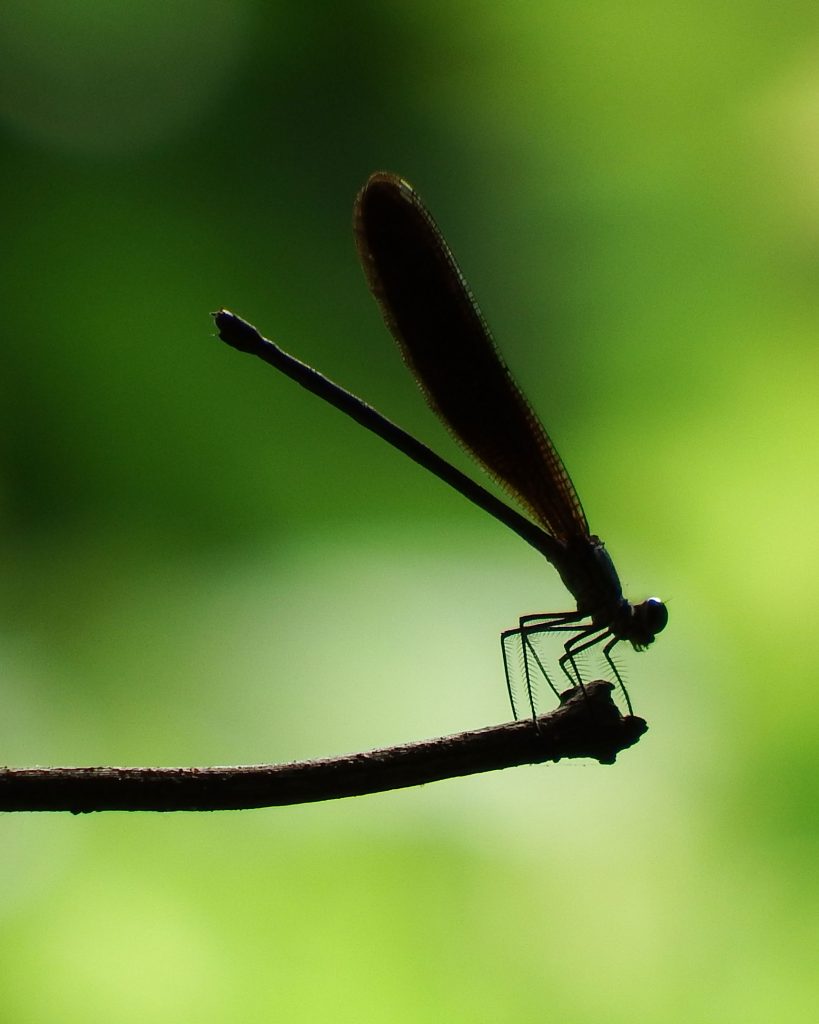
Smoky rubyspot damselfly is ready for her closeup. Catch the spines on her legs. The better for grabbing and holding her prey.
Our Park is full of insects, but not as many as I wish we had. Insects are in precipitous decline around the world. And by precipitous, I do mean falling off a cliff. Biomass of insects is down almost 70% over the last 25 years. That’s why you can drive across Texas at night and not stop every few hours to wipe the bugs off the windshield. If you are old enough, you know what I mean. If you are too young, gather round and hear the tale of how the night was once so full of insects that they piled up on your car grille and windshield as you drove.
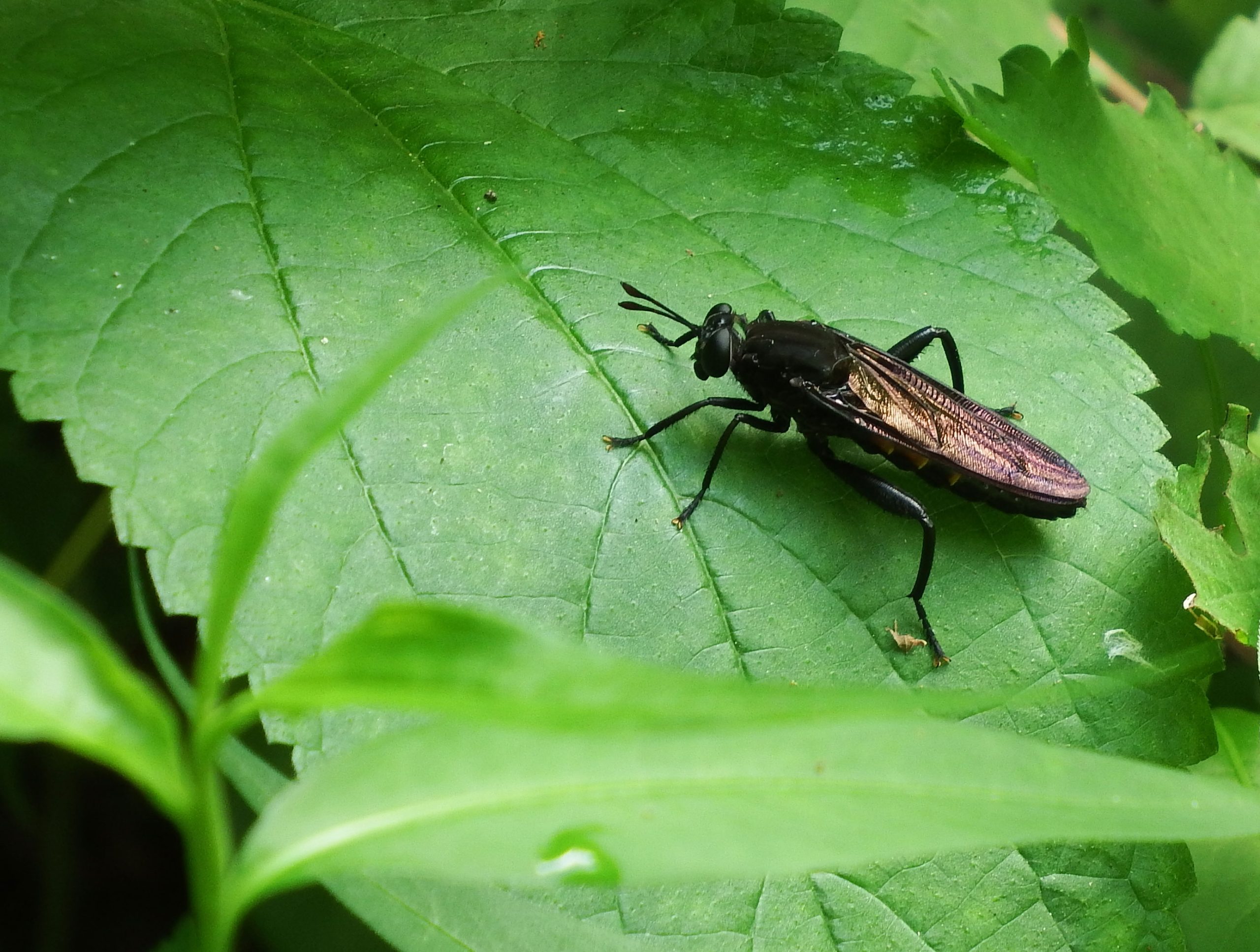
It is rare to run into an adult mydas fly because their time in this adult form is very short. They spend most of their lives as larvae eating lots of other larvae that without a predator would eat lots of what we like to eat. He’s also really pretty and over an inch long!
The reasons the world’s insects are in decline are many, and of course, most of them can be traced back to us. Pesticide use is high on the list as is loss of habitat. If you are secretly thinking “ooo, good news, I hate bugs,” then think again. Edmond O. Wilson, a famed Harvard biologist said,
“If all mankind were to disappear, the world would regenerate back to the rich state of equilibrium that existed ten thousand years ago. If insects were to vanish, the environment would collapse into chaos.”
Insects feed us. We might not eat them, but we sure do eat the plants they pollinate and the animals who eat those plants. And if you think you could survive just fine on Twinkies and toaster pops (which seem to have no natural ingredients at all), then think again. No insects, no plants, no breathable air (Edit 8-29-19: this is wrong! We have a surplus of oxygen on this planet a residue of millennia of photosynthetic life, I learned about the here and send you there for details, way cool.). This is what we call environmental services. Our relationship with insects (and a lot of other nature) involves a cost-benefit analysis in which we almost never calculate the benefit so it’s always a good idea to degrade habitat and spray pesticides. It’s all upside. Except for the downside. Calculate the price of food and air and then let me know the dollar value of the environmental services provided by insects. Killing insects wantonly turns out to be kind of expensive.
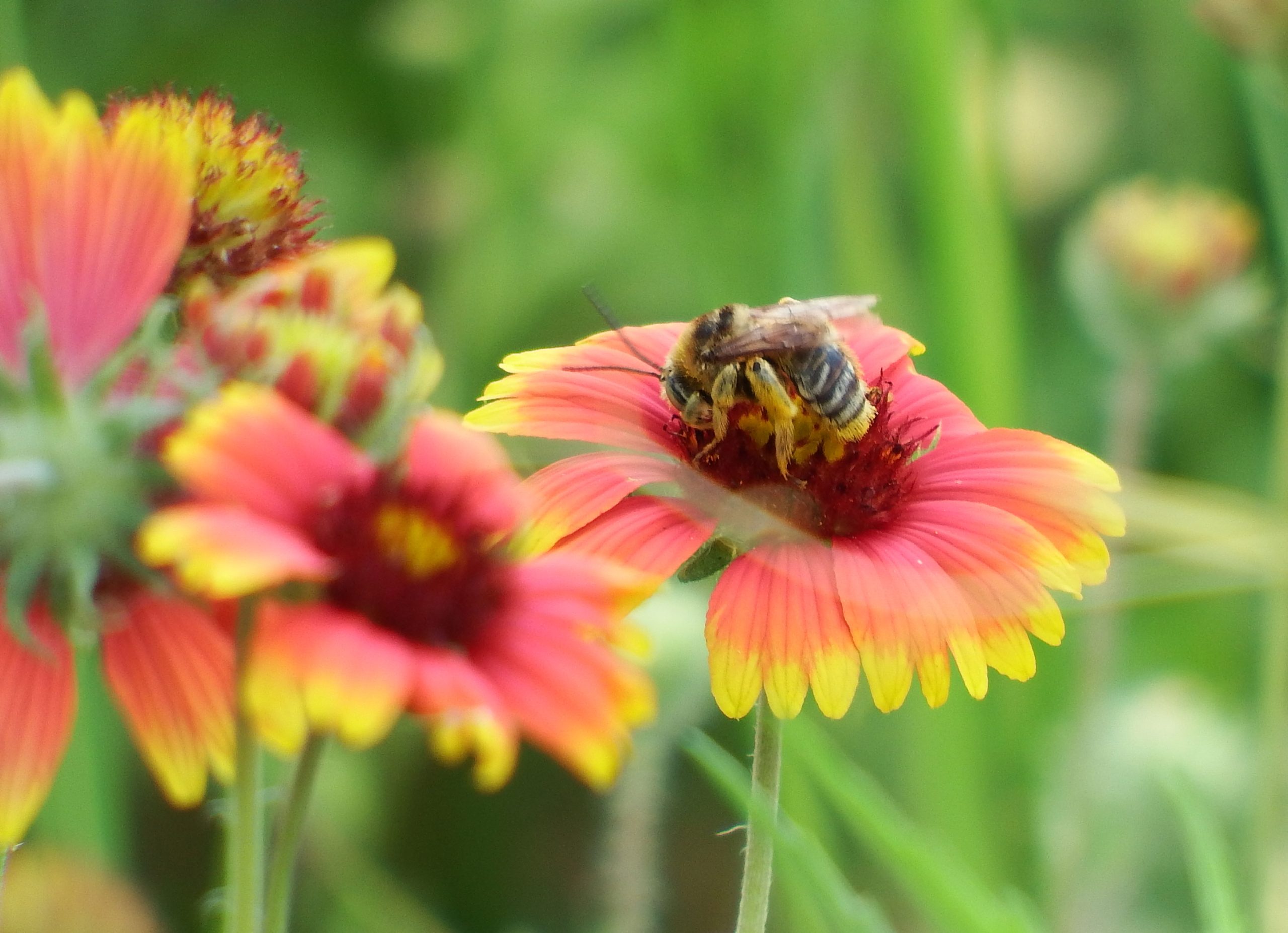
This leafcutter bee is laden with pollen. She gathers the pollen to feed her offspring, leaving each egg a loaf of pollen. She will dig a long tunnel and divide it into segments with pieces of leaves that she cuts from plants. It’s egg, pollen loaf, leaf, then again, egg, pollen loaf, leaf. When she is done filling her nest, she will likely die never even meeting all those children she so carefully prepared for.
The thing about insects that’s amazing isn’t just the environmental services they provide for free (if we don’t kill them all), it’s how much they creep us out while being so much like us. We share 60% of our DNA with a fly. We all have the same basic organs and same basic senses. But once you’ve gotten past butterflies, ladybugs and fireflies, most insects just give us the heebie-jeebies (or, even better, the creepy crawlies!).
It is time we started getting over ourselves because not only are insects keeping us alive, they practically invented the field of pharmacology. I would have trouble counting historic medical and other breakthroughs that come from molecules created by plants. They create these molecules to defend against predation by (you guessed it!) insects. The same chemicals that act on the organic systems of insect predators also act on our own organic systems. Remember that whole sharing 60% of our DNA thing.
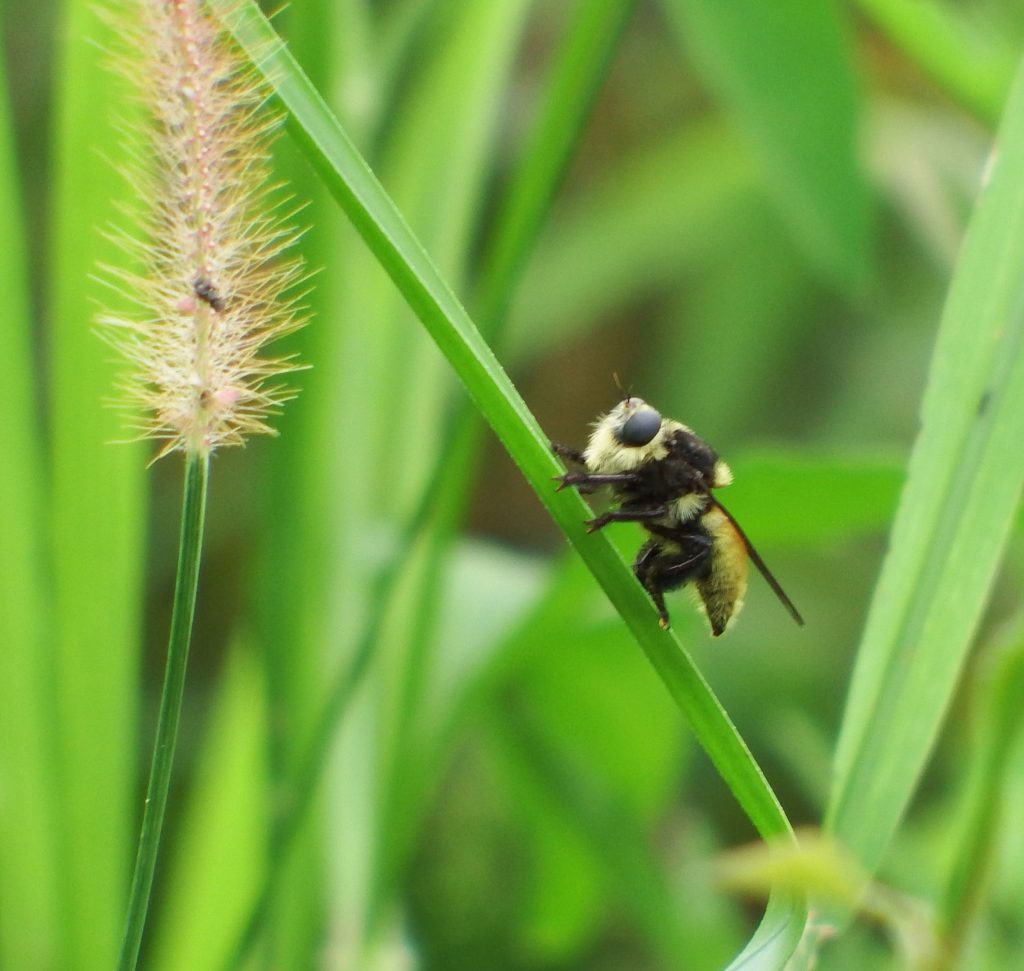
This bee killer robber fly looks a whole lot like a bee. That’s so he can sneak up on bees and kill them. It is a bug eat bug world out there! Notice the nice bristle grass flower. It is one of my favorite native grasses and you will see it all over the Park and the rest of Houston.
Even today, biologists travel to plant-rich environments to search for molecules that have novel uses. Those molecules exist only because insects forced the plants to produce them to defend against their predation and we are so much like those insects that we can make use of the molecules created by plants without us in mind.
My process for a blog post is to see something, capture good photos, research and report. This post is different because when I started a more typical blog post, I realized that it was mostly about insects and I always shy away from insect-heavy posts because my goal here isn’t to creep people out. But for all the reasons described above, I’m going to post about insects I find because they are cool and beautiful and part of the six-legged battalion that built this place and keeps it humming!
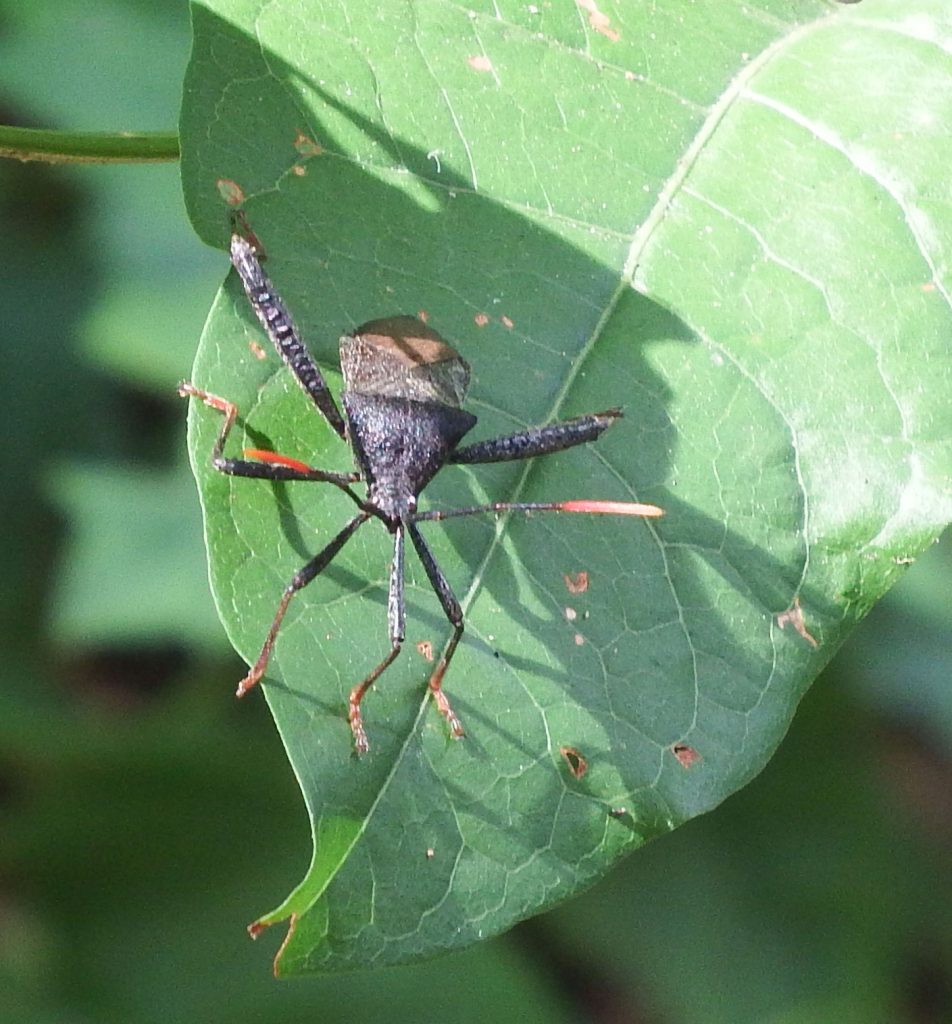
Leaf-footed bug. I just love the orange feet and antenna tips. You have to marvel at the whimsy.
This post is my insect rant and I will link to it in all insect-heavy posts in the future.
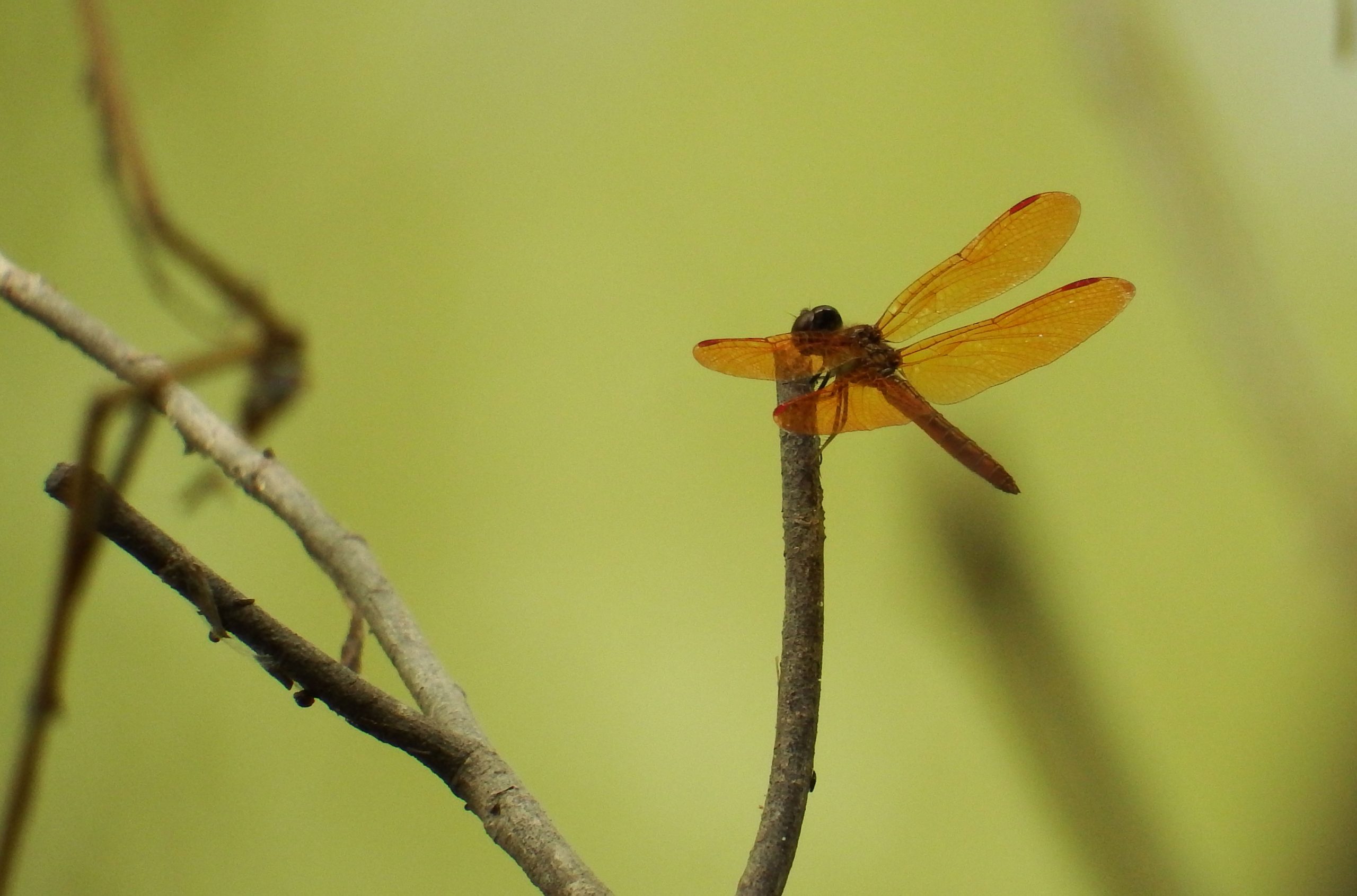
This slough amberwing is a lovely small dragonfly that likes to hang out near the water where she will lay her eggs. Her larvae are voracious and they live on mosquito larvae. Thank every dragonfly you meet.
Green Brown Anole?
This guy has been positively ID’d as a brown anole. And morphologically, it looks exactly like a brown anole. But it’s green. Apparently, there is a lot of color variation in the brown anoles, but this really threw me, so I’m posting it because… weird.
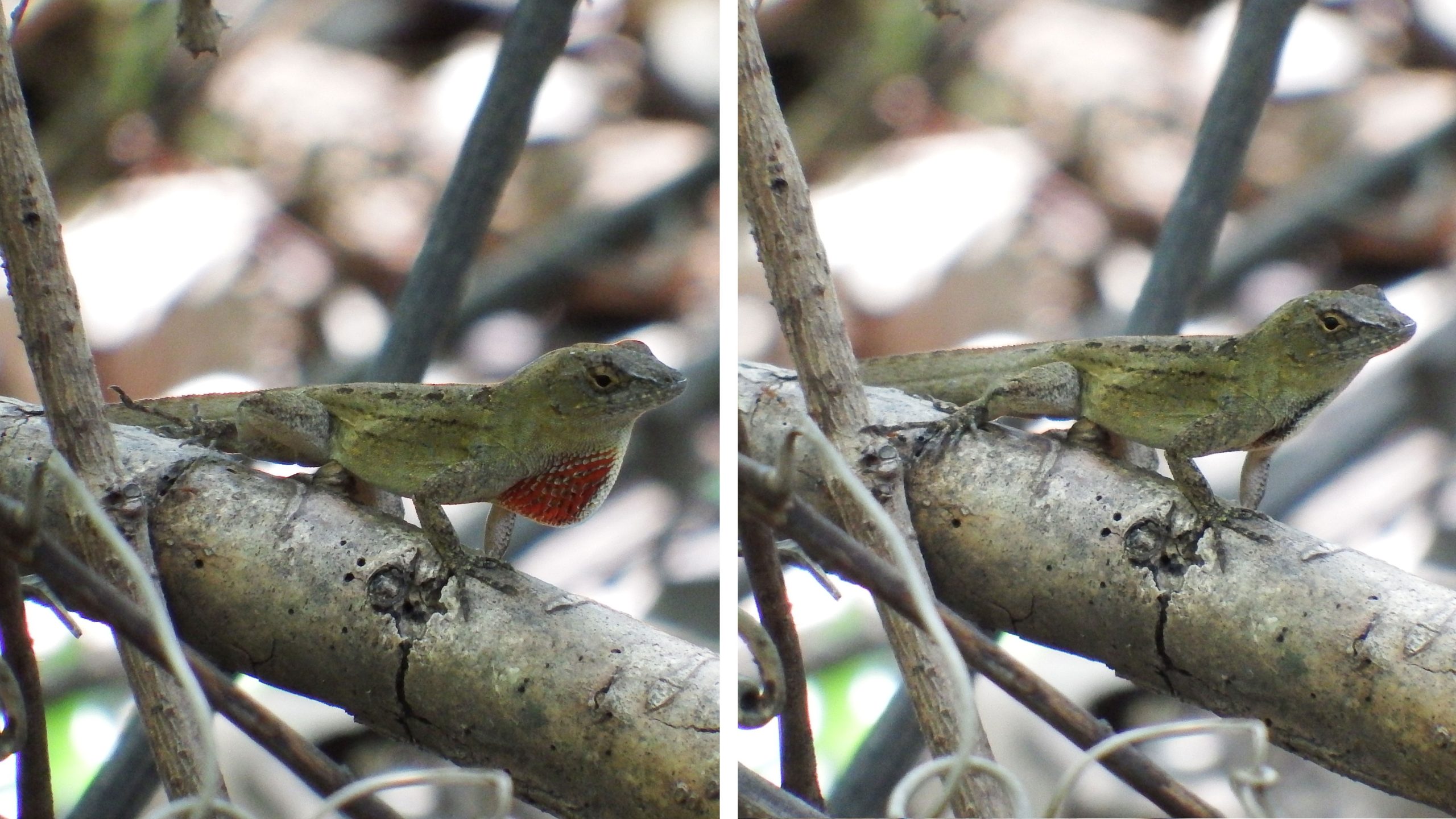
Green brown anole?

